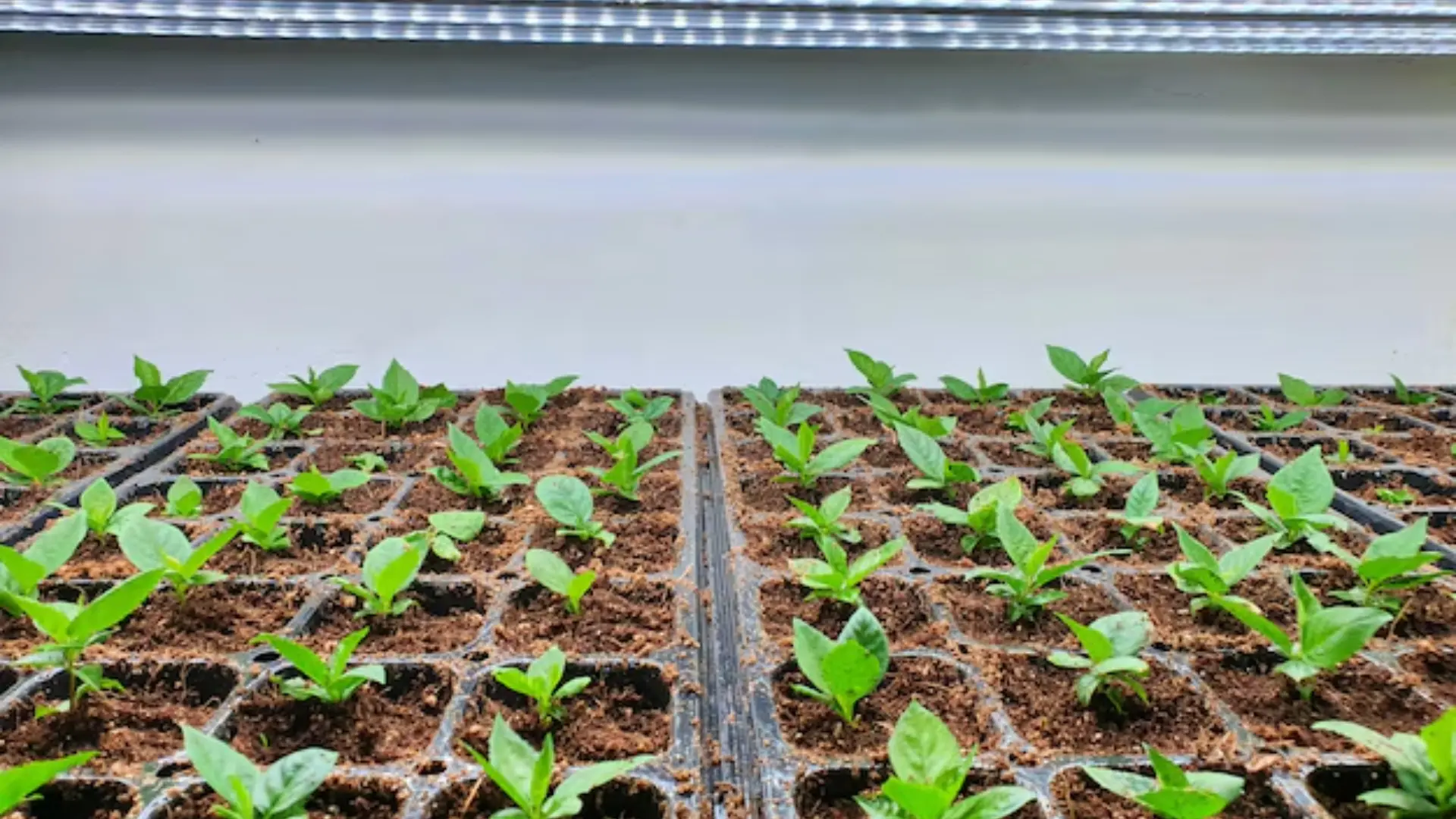
April 29, 2025

Hydroponic growing is a technique that allows plants to grow well in nutrient-rich water solutions rather than soil. This new method of farming's rapid rise in popularity has been fueled by its capacity to produce food in areas where conventional farming isn't possible, together with its eco-friendliness and efficiency. In this article, you'll explore the world of hydroponics, its benefits, and its types.

One way to cultivate plants without soil is hydroponic gardening. Hydroponically grown plants get all the nutrients they need without soil. This technology allows plants to flourish in smaller spaces with fewer resources, and it provides for more controlled settings.
For regions with limited space or low soil quality, hydroponic growth is ideal for indoor gardening, urban farming, and commercial operations. Hydroponics is revolutionizing food, from urban rooftop gardens to suburban backyard plots.
A key component of hydroponic systems is the use of water solutions to transport nutrients to plants' roots. In this system, plants are often supported by an inert medium like clay pebbles or coco coir while their roots dangle in water or air.
Nitrogen solutions are watered-down versions of the soil minerals that plants need for growth and are the foundation of hydroponics. Plants absorb these nutrients through their roots, leading to increased growth and production. Plants can thrive in these soil-free environments because the water and oxygen levels are precisely regulated.
In the world of hydroponic gardening, various hydroponic systems cater to specific needs and growing conditions. Among them, the nutrient film technique and ebb and flow system are popular choices for maximizing plant health and yield. The nutrient film system allows a thin film of nutrient-rich water to flow over the plant roots, providing them with essential elements while ensuring optimal oxygenation. It grows plants in a growing tray that is slightly tilted and positioned above a nutrient solution reservoir.
Furthermore, by incorporating carbon dioxide into the environment, growers can significantly enhance photosynthesis, promoting healthier and faster-growing plants. The flexibility of hydroponic production systems enables growers to create controlled environments that maximize efficiency, making hydroponics a groundbreaking solution for modern agriculture. Whether you are setting up hydroponic gardens in urban spaces or large-scale commercial operations, these advanced systems provide exciting opportunities for sustainable food production.
Hydroponics is a method of growing plants that does not involve using soil. Instead, hydroponic nutrient solutions, which are mixtures of water and vital minerals, provide all the essential nutrients plants need. This nutrient solution, which is meticulously balanced, provides the precise nutrients that plants need for optimal growth. Growers can regulate the water's composition to give plants the nutrients they need for healthy, rapid growth.

Potassium, nitrogen, and phosphorus (NPK) are the three most essential plant nutrients. Calcium, magnesium, trace minerals (such as iron and zinc), and other components are also crucial. All of these are added to the nutritional solution so the plant can grow roots, leaves, and flowers.
Hydroponic system is becoming more popular among commercial growers, urban farmers, and home gardeners due to its many benefits over conventional farming techniques. Here are a few crucial advantages:
Traditional farming methods that rely on soil can use up to ninety percent more water than hydroponic systems. Hydroponics is a more sustainable option, particularly in regions with limited water resources, because water is recirculated inside the system, minimizing waste.
Plants develop substantially more rapidly in hydroponic systems than in soil-based systems because oxygen and nutrients are constantly delivered to the roots. Growing many crops that mature 25-30% faster may allow for more to be done in less time.
Using hydroponic systems, particularly vertical ones, more plants can be produced in the same amount of space. This is a great solution in cities where space is at a premium or when planting outdoors isn't an option.

Because soil is not used in hydroponic systems, pests and diseases carried by soil are reduced to a minimum. Consequently, hydroponics is a greener, less polluting alternative because chemical pesticides aren't needed as much.
Plants can be cultivated indoors or in controlled surroundings using hydroponics, regardless of season or weather. That way, output, and availability will be constant.
With hydroponics, gardeners have complete control over the growing conditions, including the amount of nutrients, water pH, and temperature. As a result, plant health improves, and yields become more consistent.
Hydroponic farming requires less work than traditional farming methods because it eliminates the need to till the soil, weed it, or manage it. Automation can further simplify the process, making it even easier for growers to handle big operations.
These benefits make hydroponic growing a highly efficient, sustainable, and productive method of agriculture, ideal for the future of farming.

There are several types of hydroponics systems:
Drip Systems: Drip irrigation involves using pipes that carry fertilizer solutions to the soil around each plant's roots. This system can be adapted to various plants by modifying the flow rate, making it both efficient and adaptable. The adaptability of drip systems makes them ideal for large-scale commercial installations and more intimate home gardens. However, frequent maintenance could be necessary to avoid blockage.
Wick Systems: The wick system is ideal for beginner hydroponics because it is the primary type. In the same way, oil rises through a candle's wick, and the nutrient solution is pulled up to plants from a reservoir using wicks. There is no need for pumps or electricity because this system is passive.
Wick systems are ideal for indoor gardening on a smaller scale because they require little upkeep and are simple to set up. They work wonderfully for people who grow herbs or smaller plants as a pastime.
One drawback is that larger plants may need help to get enough water and nutrients from the wicks using this method. The pace of growth might also be lower than that of more dynamic systems.
Aeroponics: Aeroponics is an advancement on hydroponics that involves misting plants suspended in the air to provide them with nutrient-rich water. The roots can absorb oxygen directly, which speeds up their growth and ensures that they develop normally.
The roots of plants grown in an aeroponic system get abundant oxygen, allowing them to grow at a rate that rivals that of other systems. Vertical farming is a breeze with this space-saving solution.
Deep Water Culture (DWC): An air pump adds oxygen to the water in Deep Water Culture, keeping plant roots from rotting as they are submerged in a nutritional solution. Plants grow quickly in environments with a steady supply of oxygen and nutrients. Once installed, the recirculation of water and nutrients makes DWC a low-maintenance option. Because nutrients and oxygen are always available, plants in this system develop rapidly.

However, because plants are sensitive to changes in water temperature, monitoring the water temperature is essential. Furthermore, not all plant species are compatible with DWC systems; this is particularly true for plants that need drier soil near the roots.
Optimal plant growth in a controlled, soil-free environment is the fundamental benefit shared by all systems, though each has distinct advantages.
Hydroponic growing represents a transformative approach to agriculture, reshaping how to cultivate food in a world increasingly challenged by space limitations, climate change, and resource scarcity. Utilizing nutrient-rich water solutions makes effective, soil-free farming that optimizes growth potential while minimizing environmental effects possible.
Learning the fundamentals of hydroponics and investigating the different systems on the market makes it abundantly evident that this innovative approach has many benefits. Hydroponics offers water conservation, faster plant growth, less pesticide use, and year-round output. Because of these advantages, it is a great pick for everyone interested in urban farming, commercial growing, or home gardening.
Hydroponics offers a solution for different growing demands, whether you like wick systems' simplicity or aeroponics' high-tech accuracy. Hydroponic growth is leading the way in modern agriculture, providing a viable solution for a more resilient and fruitful future in farming, which is crucial given the increasing demand for sustainable food supplies.
Disclaimer: This material is for informational purposes only and should not be relied on for legal, medical, financial, or any other form of professional advice.